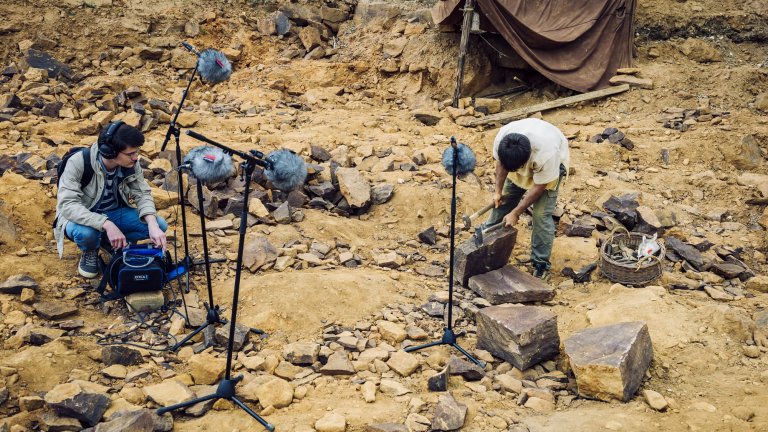
© Cyril Frésillon / MSH – LSE / CNRS Photothèque
Scientific news
During UNESCO’s Week of Sound, meet the scientists who are studying our sound environment…sometimes in very surprising ways.

© Cyril Frésillon / MSH – LSE / CNRS Photothèque
Sound, which is an essential instrument for communication, a major environmental marker, a cornerstone of the arts and a warning signal in case of danger, clearly could not be replaced from the scientists’ perspective. It is even the subject of research in many disciplines, including some that may surprise you.
Let’s think in particular about biomechanicists, who by studying individual musicians’ gestures, are trying to understand how this gives their instruments a unique sound. Acoustics is also useful for biologists trying to discover the secrets of animal communication, by closely studying the distress cries of young caimans or frog serenades during the mating season! And what about Mylène Pardoën’s unusual profession, a soundscape archaeologist, who studies and reproduces sounds from the past so her peers can hear them? Her unique knowledge in this field will be used in the restoration of Notre-Dame de Paris, where she is helping architects to reproduce the cathedral’s specific acoustics so that its organ will sound even better in a few years.
Sound can also be a nuisance that must be controlled, especially in towns and cities where birds struggle to communicate and are disturbed by the sheer number of man-made sounds. And when the noise is reduced, as during the recent lock-downs, it’s quite another soundscape that people are rediscovering. Take advantage of this Week of Sound through our selection of photo and video reports to discover the variety of ways scientists study and analyse our sound environment.
Our work is guided by the way scientists question the world around them and we translate their research into images to help people to understand the world better and to awaken their curiosity and wonderment.